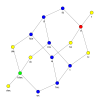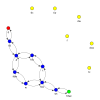At the end of the wiki page on rotation matrix, there is a link to the Rodrigues rotation formula. This could be what you're looking for.
Gribouillis 1,391 Programming Explorer Team Colleague
ddanbe commented: Thanks for the tip. :) +15
Gribouillis 1,391 Programming Explorer Team Colleague
tdsan commented: I think this is great, I made one slight modification to the code "(r'->\s", I removed the -> and it seemed to work great through this log file +0
Gribouillis 1,391 Programming Explorer Team Colleague
Gribouillis 1,391 Programming Explorer Team Colleague
Gribouillis 1,391 Programming Explorer Team Colleague
Gribouillis 1,391 Programming Explorer Team Colleague
rproffitt commented: Got it. I'll let you test this. Thanks for asking since I learned a thing or two. +0
Gribouillis 1,391 Programming Explorer Team Colleague
Gribouillis 1,391 Programming Explorer Team Colleague
ddanbe commented: Surely helps. :) +15
Gribouillis 1,391 Programming Explorer Team Colleague
Venkata subbara commented: ncountering same error as AttributeError: module 'pandas' has no attribute 'read_file' +0
Gribouillis 1,391 Programming Explorer Team Colleague
slate commented: Good answer. Op is not reading the answers anyway. +8
Gribouillis 1,391 Programming Explorer Team Colleague
Gribouillis 1,391 Programming Explorer Team Colleague
Crazyscript77 commented: Thats such a good idea, Im gonna give this a shot right now, thanks so much for your help! +0
Gribouillis 1,391 Programming Explorer Team Colleague
Crazyscript77 commented: Ill definitely keep this in the toolbag, thanks again! +0
Gribouillis 1,391 Programming Explorer Team Colleague
AssertNull commented: Good approach. I shall follow it. +5
rproffitt commented: 2to3 times a better answer as well! +10
Gribouillis 1,391 Programming Explorer Team Colleague
Gribouillis 1,391 Programming Explorer Team Colleague
Wallace Jnr commented: The Problem being talked about is implementation of the pseudocode with respect to Gaussian Elimination with Scaled Partial Pivoting. +0
Gribouillis 1,391 Programming Explorer Team Colleague
quatrosem commented: that is it! thanks... question answered! +0
Gribouillis 1,391 Programming Explorer Team Colleague
Gribouillis 1,391 Programming Explorer Team Colleague
Gribouillis 1,391 Programming Explorer Team Colleague



